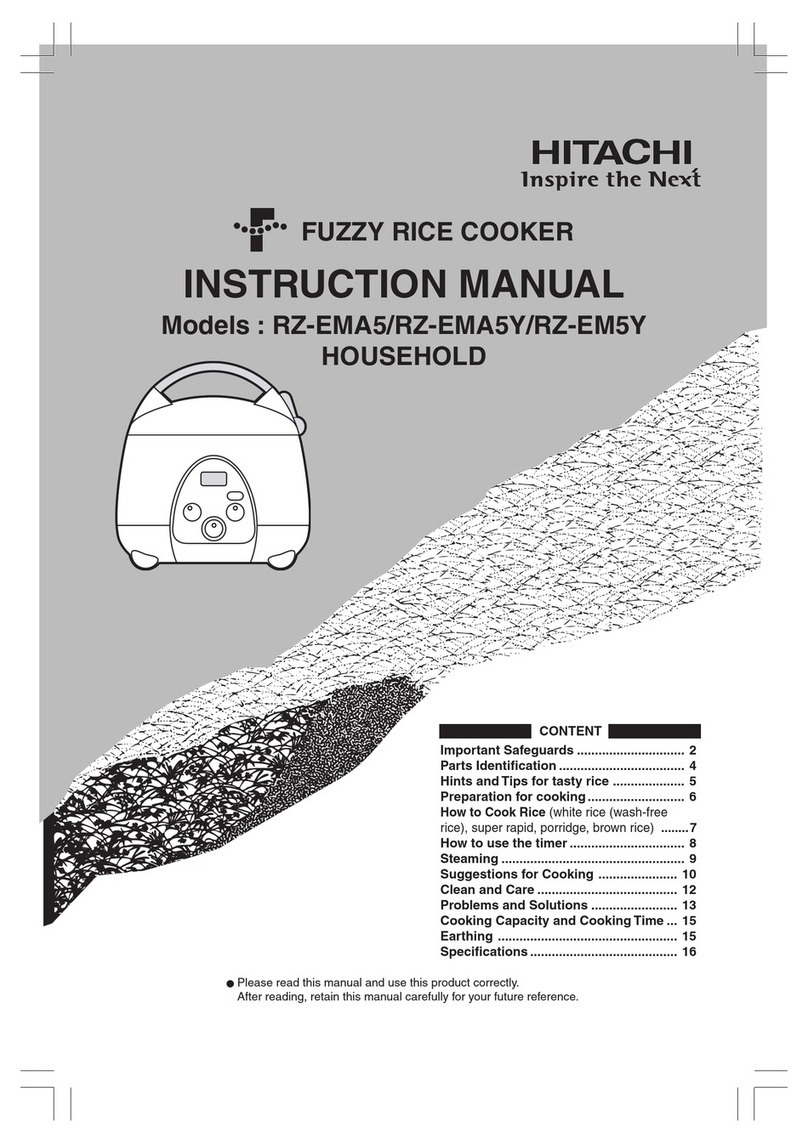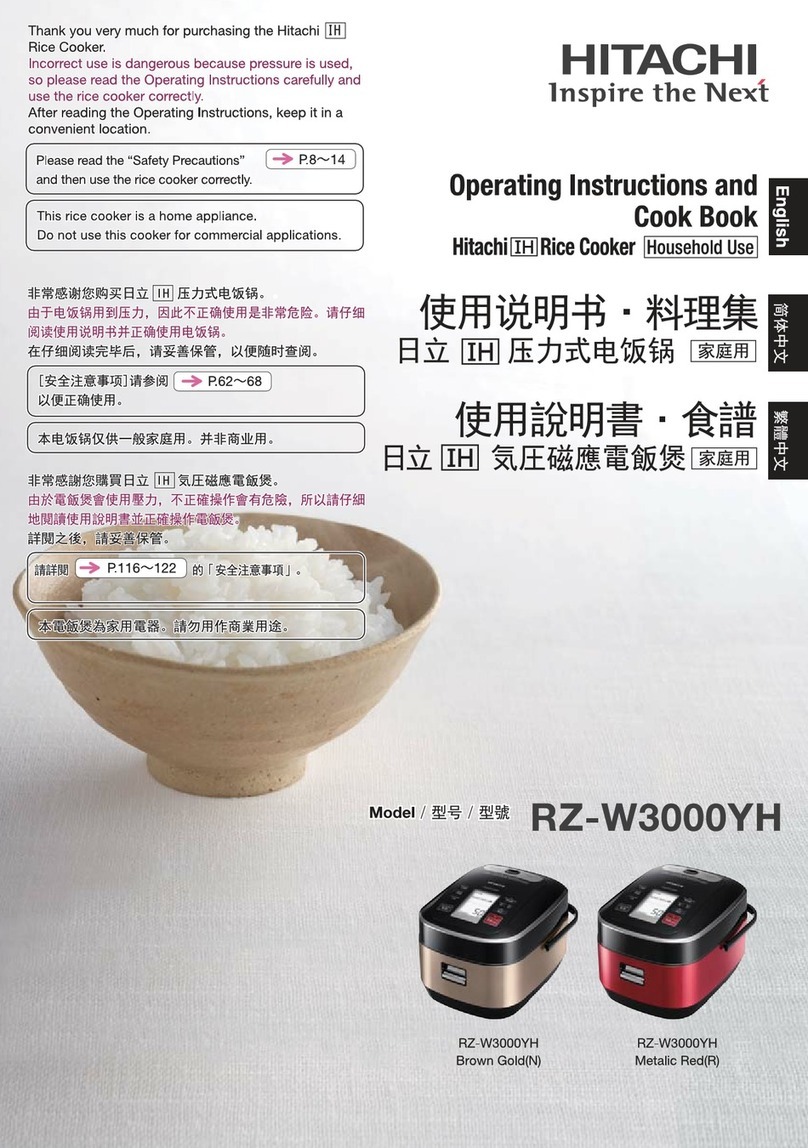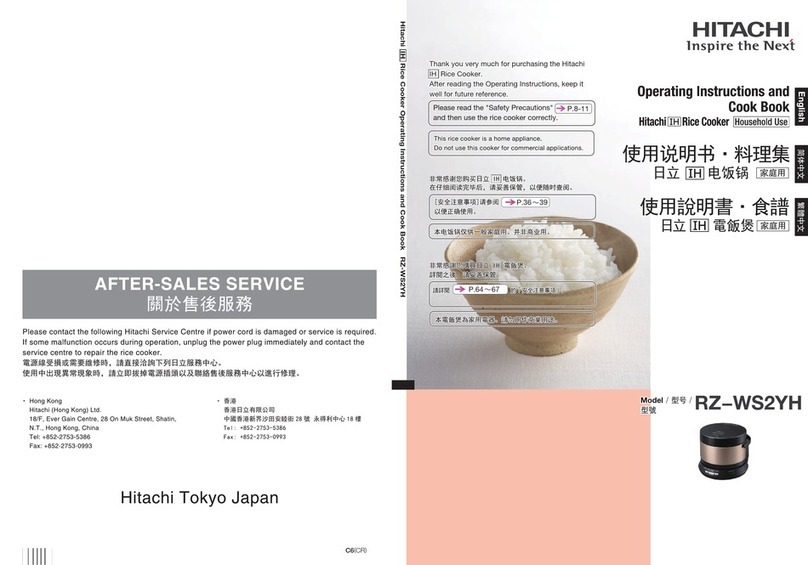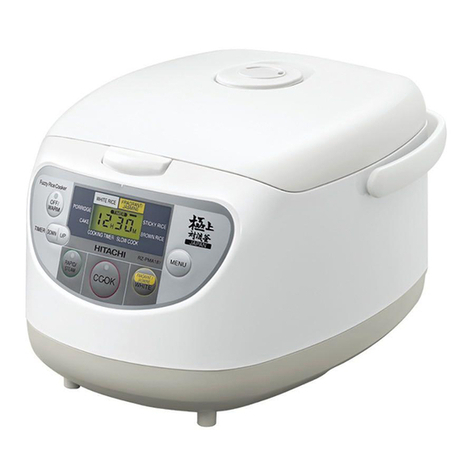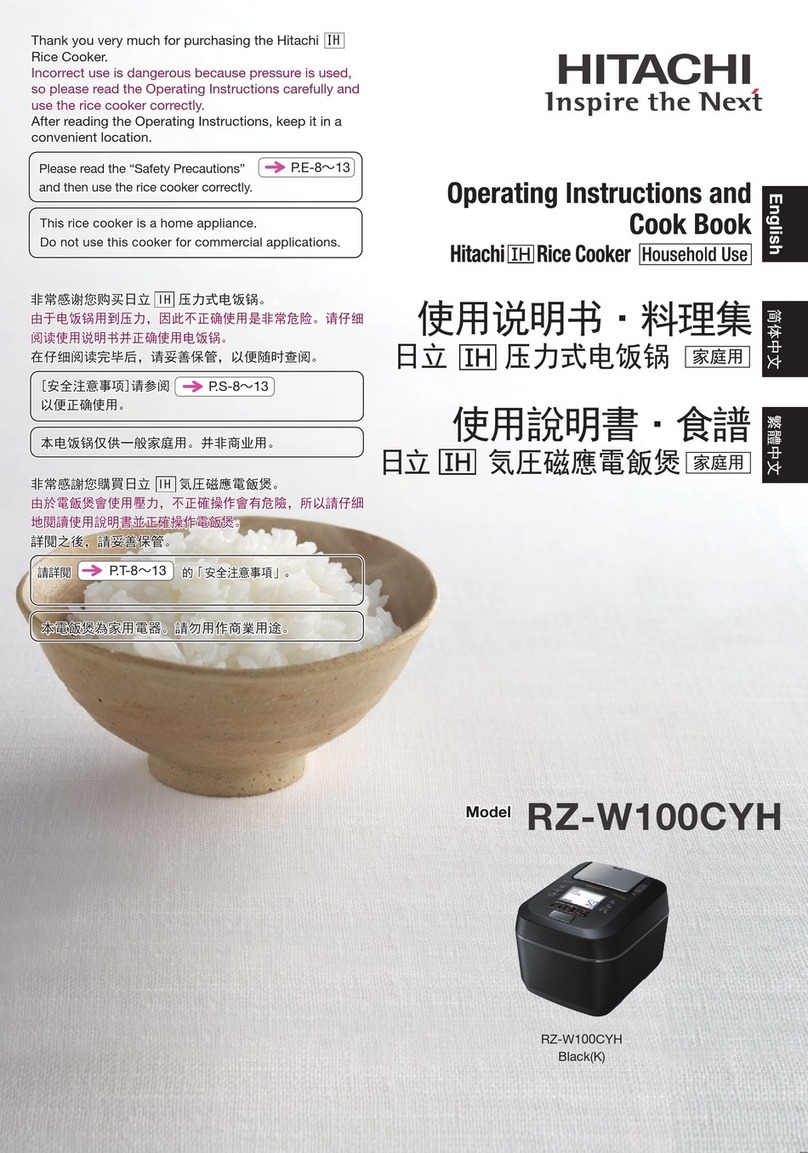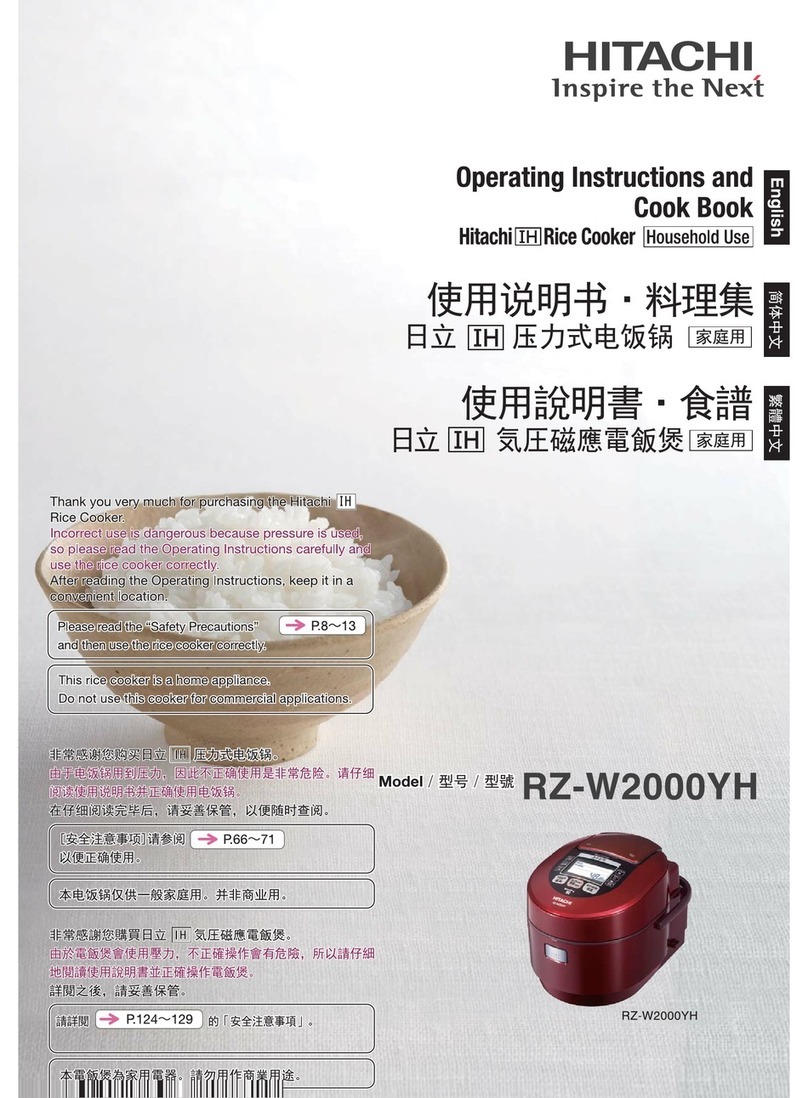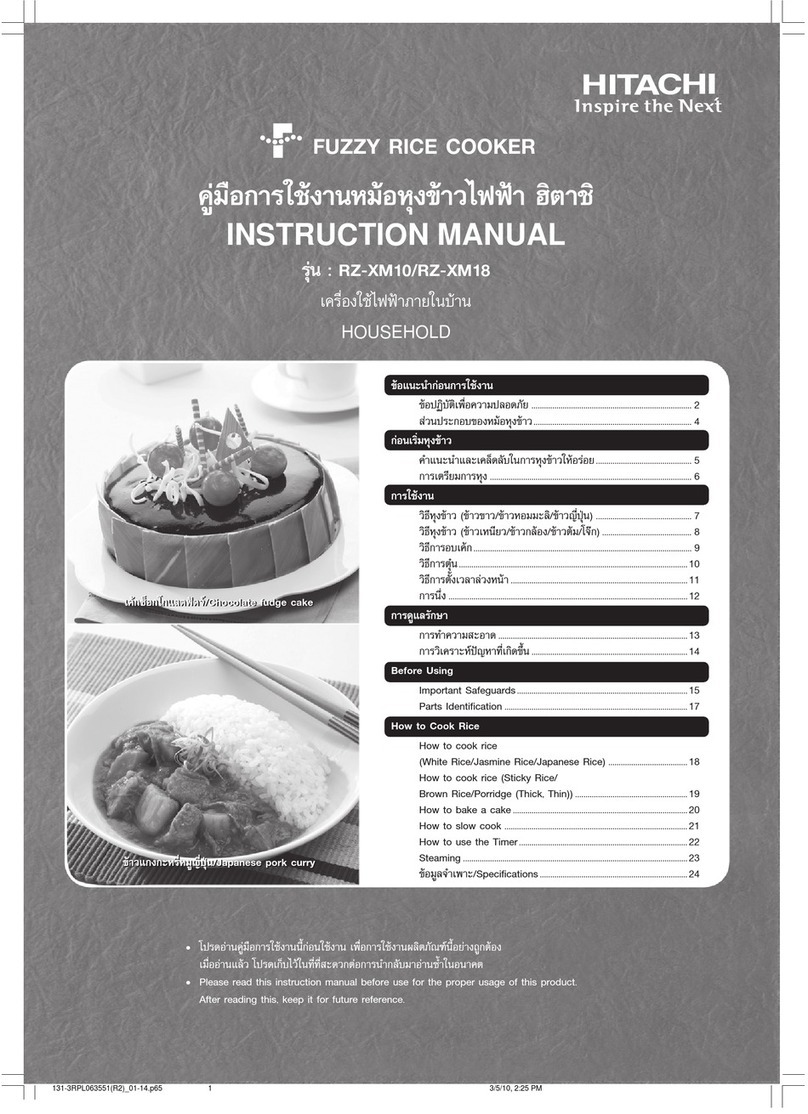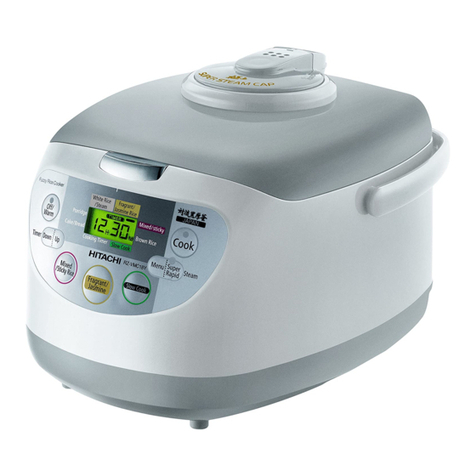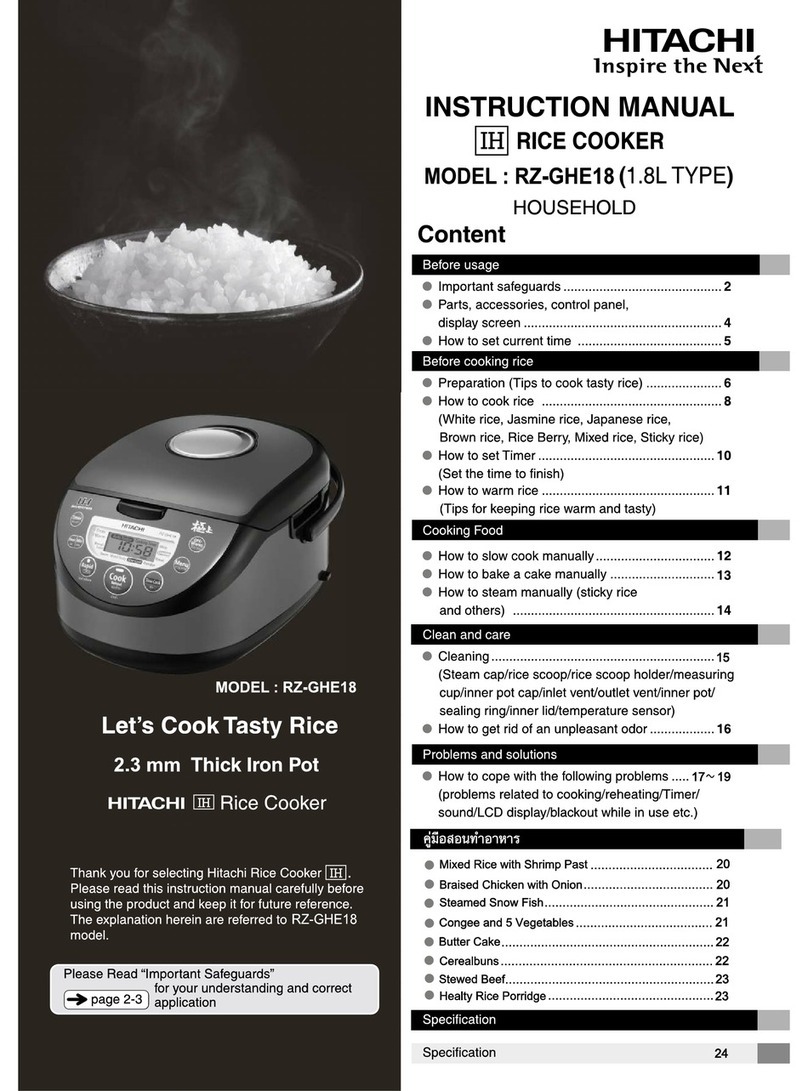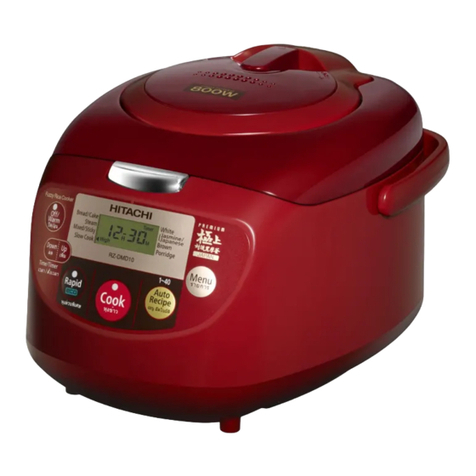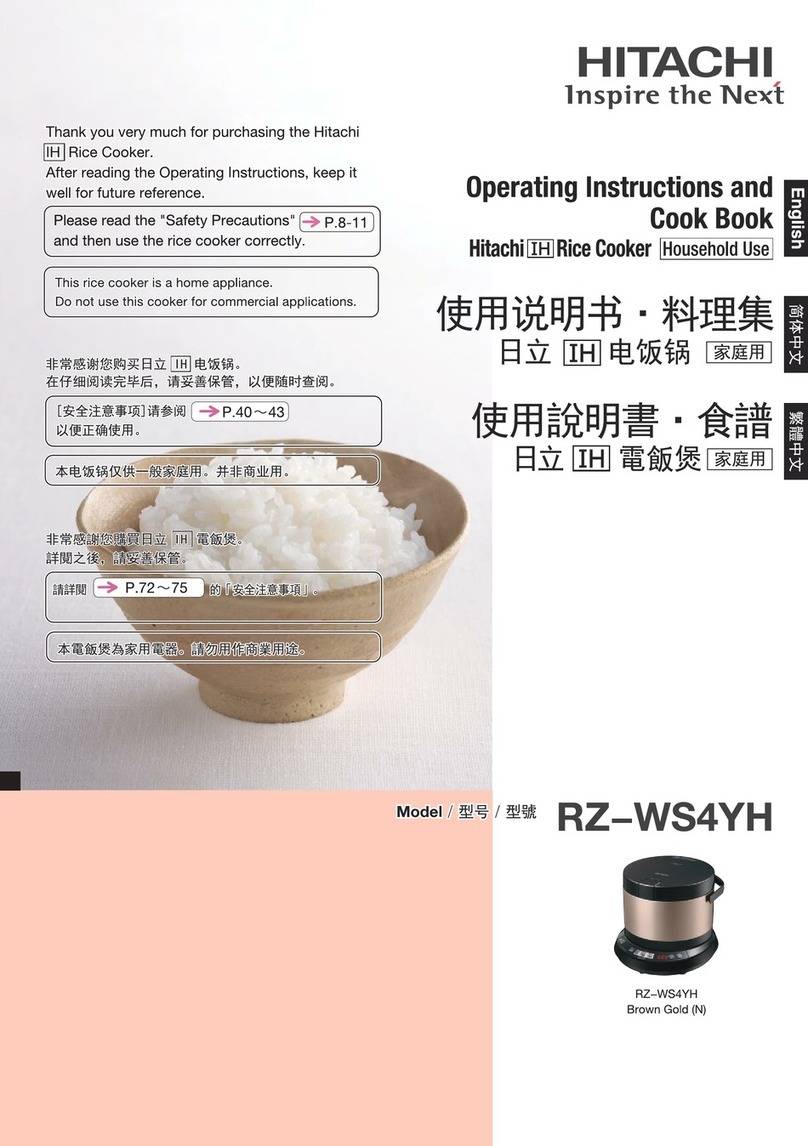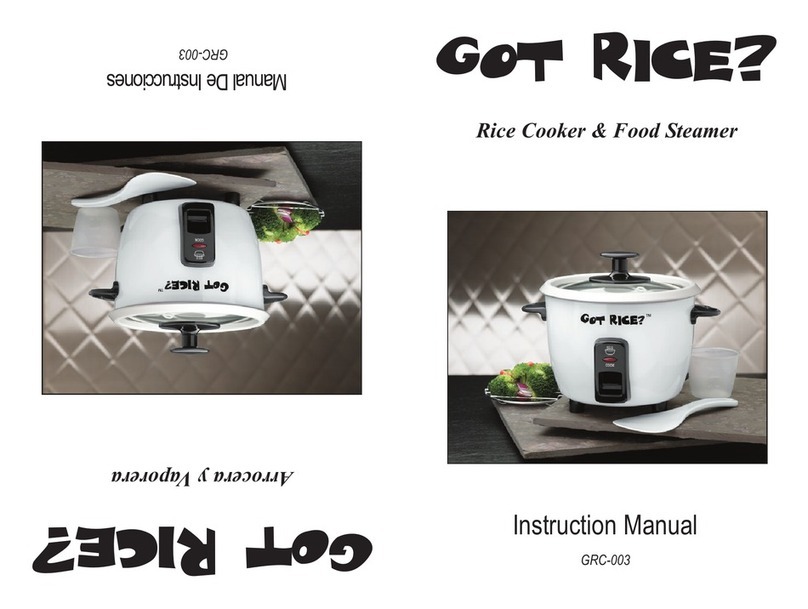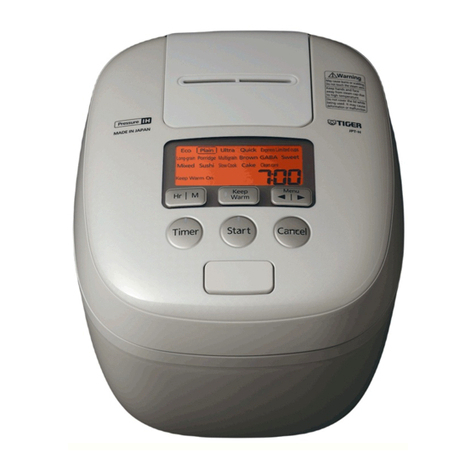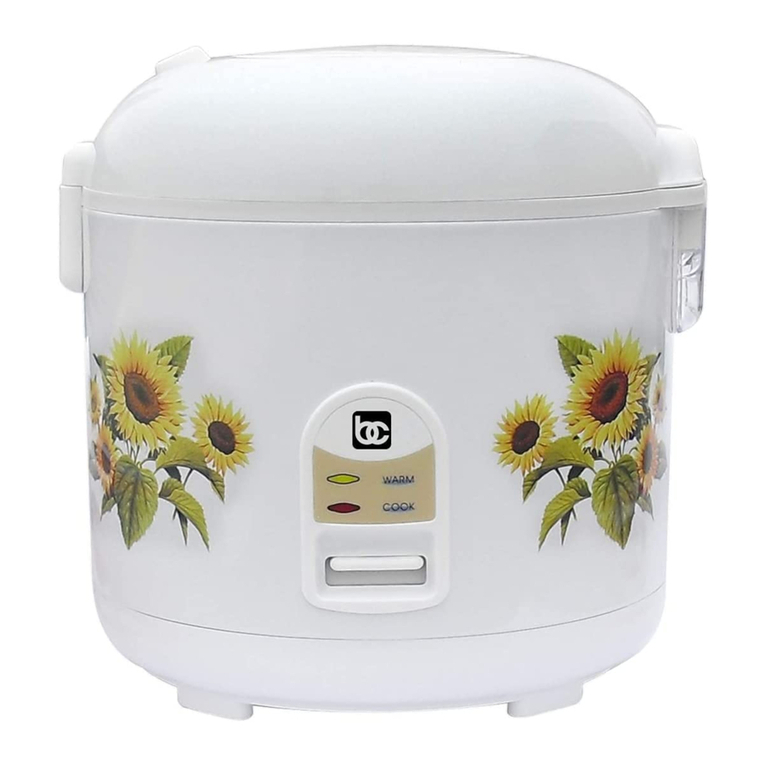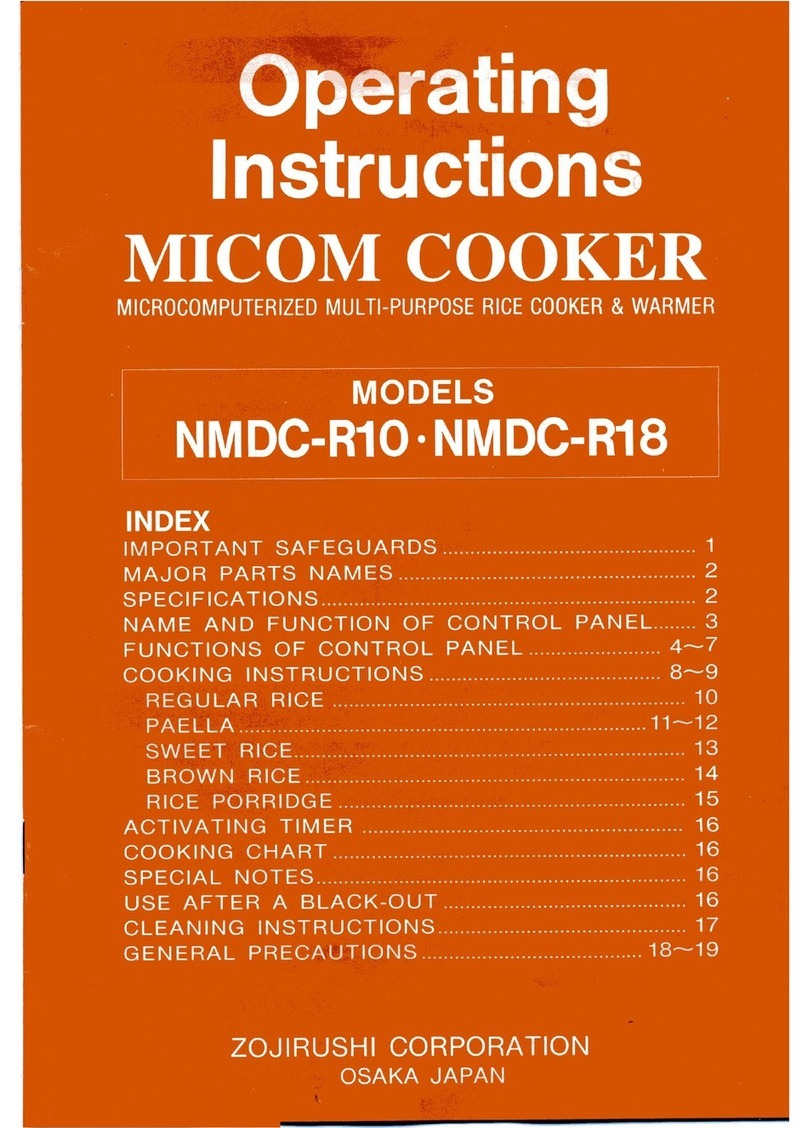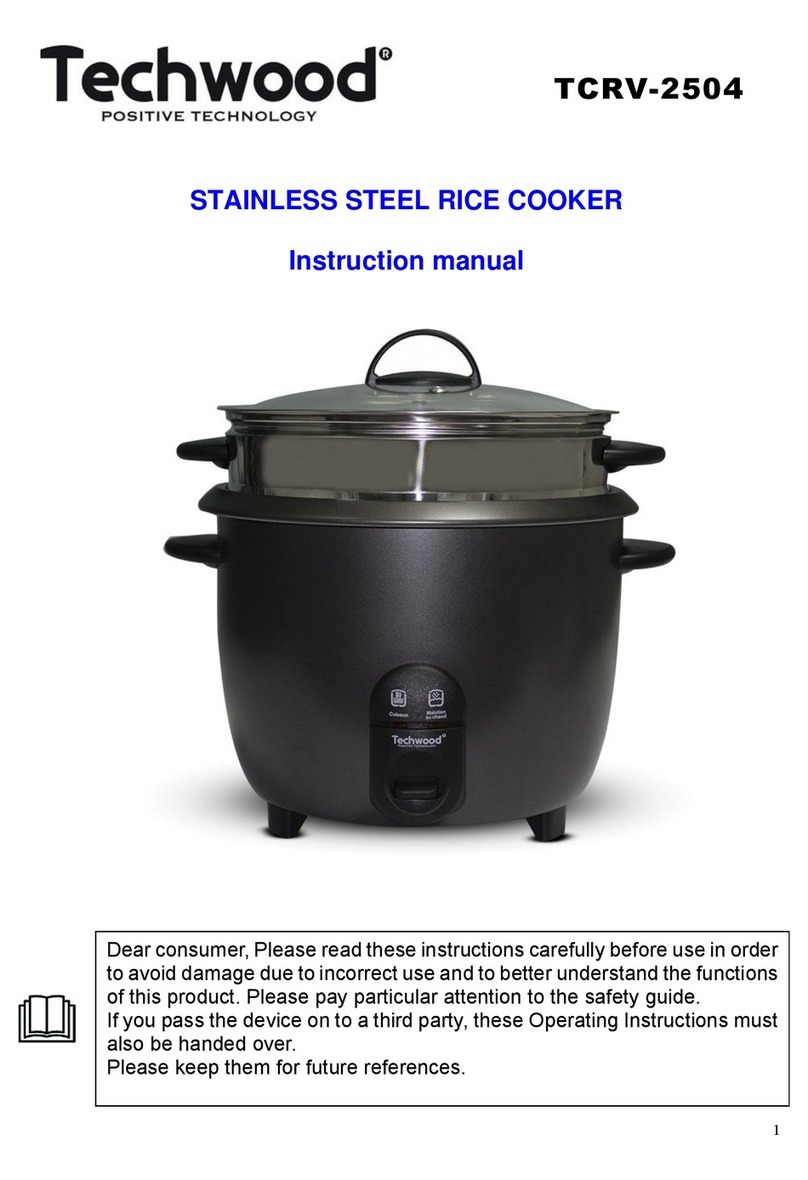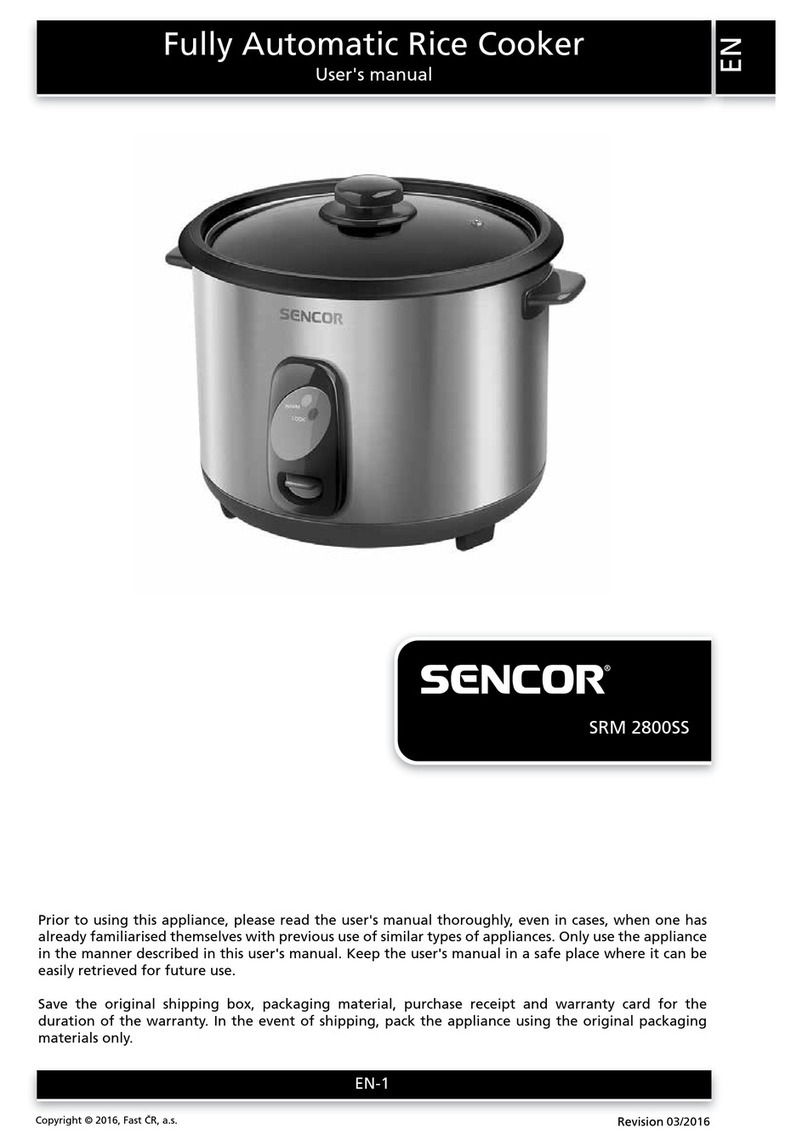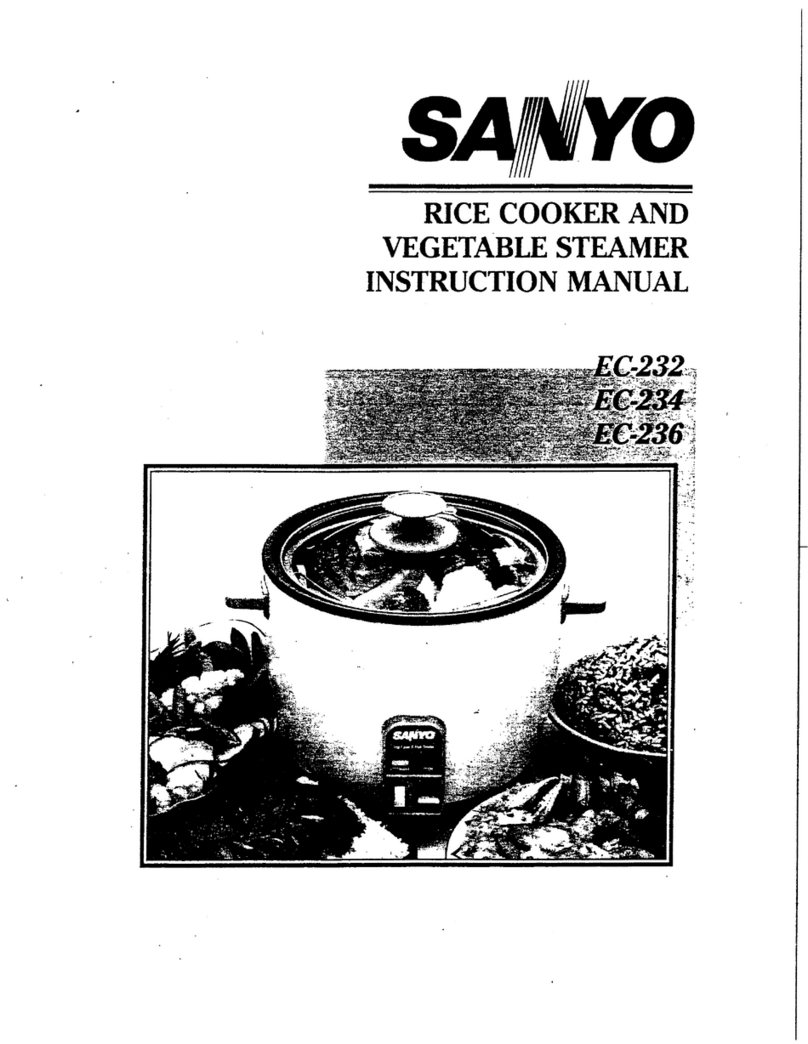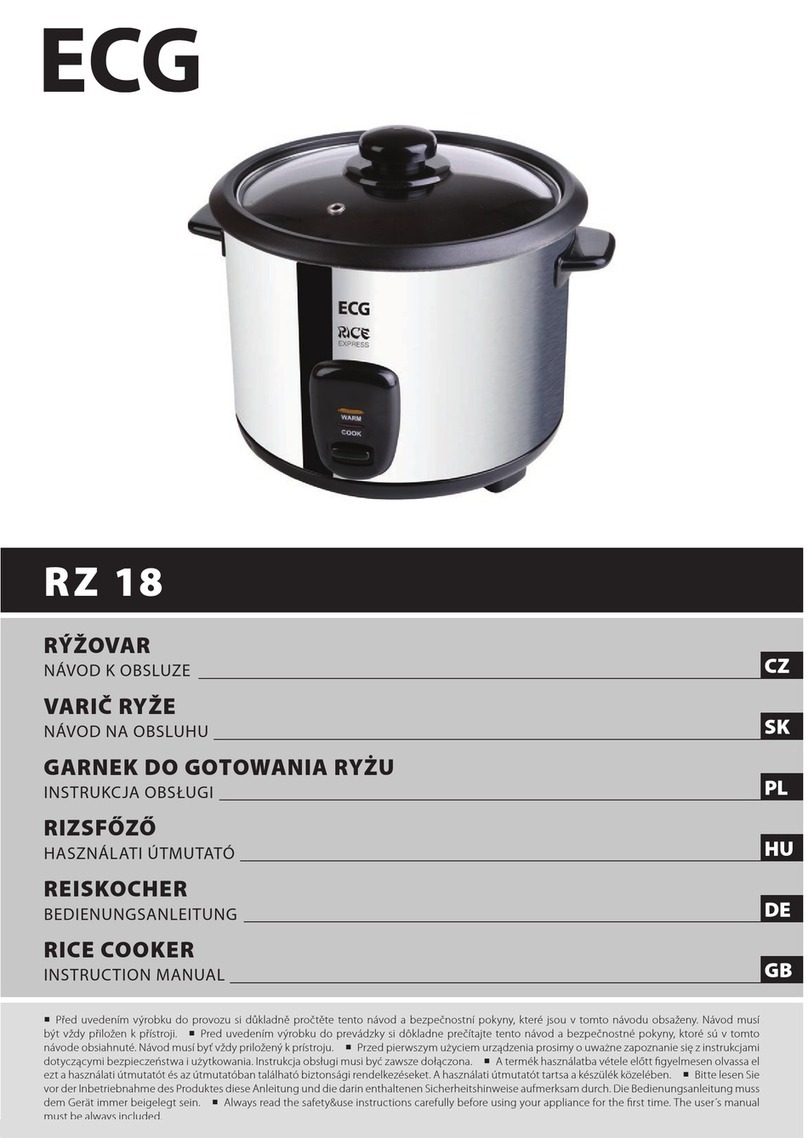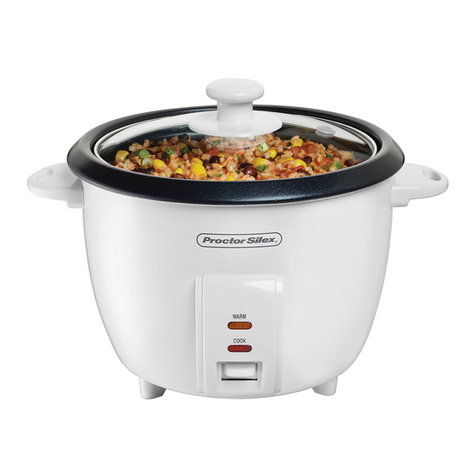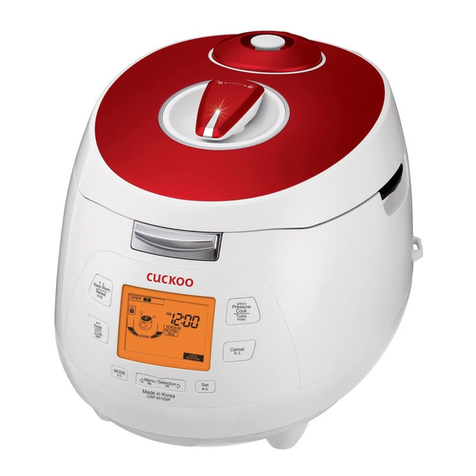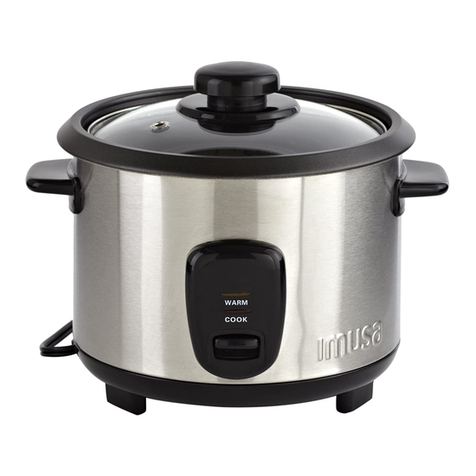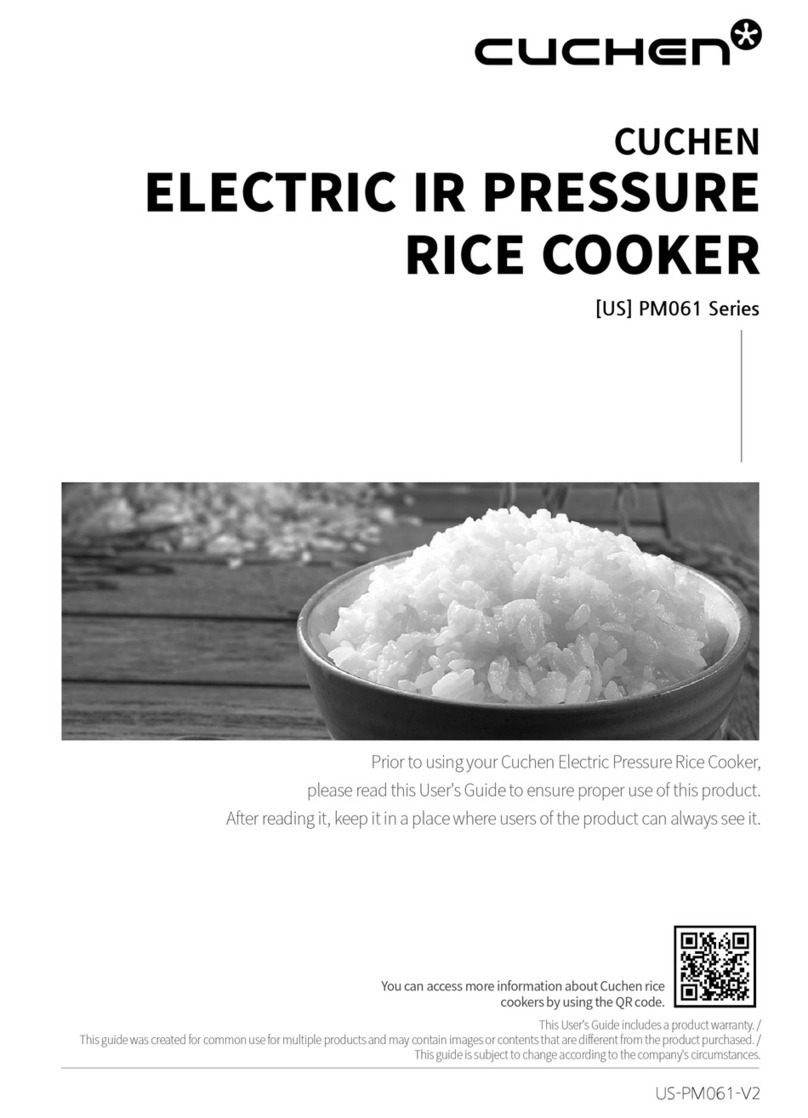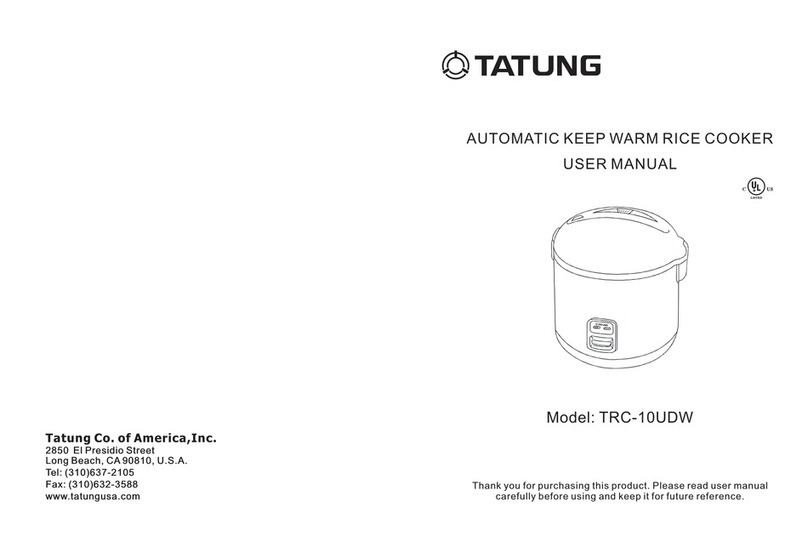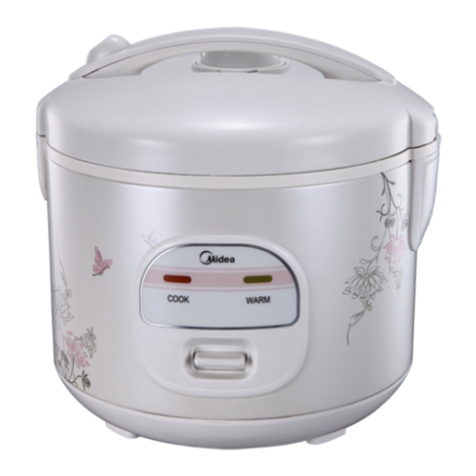
E-8
Warning
Safety Precautions
To prevent electric shocks, short circuits, ignition, electrical fires, or injuries
●
Do not modify the rice cooker.
●
The rice cooker should only be disassembled or repaired by a service
engineer.
Bottom of the body
(Be sure to follow the safety precautions.)
●
Do not use the appliance if it has been immersed in water.
●
Keep the appliance away from water. Do not immerse it in water. Never
pour water on the appliance.
●
Do not insert metallic objects or foreign substances (e.g., pins or needles) into the
intake or exhaust vent on the bottom of the body, or into gaps between components
.
●
Do not allow unsupervised children to use the appliance. Keep out of the reach of children.
Disassembly prohibited
Prohibition
Instruction
Fire, electric shock, or injuries may result if:
●
Immediately unplug the cooker, discontinue using it, and
contact our local representative for inspections or repairs.
- The power cord or power plug becomes abnormally hot during use.
-
An abnormal sound(s) is heard during operation.
-
The power turns on or off when the power cord is bent.
- The appliance becomes abnormally hot or emits a burning smell.
- Water leaks out.
- You experience an electric shock when you touch the appliance.
- The power sometimes does not turn off automatically.
- The motor sometimes stops, or runs slowly or at irregular intervals.
- Any other abnormality or malfunction occurs.
Prohibition
●
When carrying the rice cooker, do not hold it by the lid. Be sure to hold its grips.
●
When carrying the rice cooker, do not touch the hook button.
●
Do not use the rice cooker with small metallic objects or aluminum foil left inside it.
●
Only use the inner pot supplied with the rice cooker.
●
Do not use the inner pot if it has been cracked or deformed by being dropped on the oor or
hit against something.
●
Do not use the appliance in the following locations:
- Locations where it may be splashed with water or near a heat source (stoves, etc.).
- On an uneven surface or non-heat resistant carpet.
- On a slide tabletop that is not sturdy enough to support the weight of the appliance.
- On a carpet that may block the exhaust or intake vent.
- On an aluminum sheet.
- Locations where the lid does not fully open.
Exhaust
vent
Intake vent
This appliance is intended for household use only. Do not use it for professional catering purposes.
To prevent injuries to the user and other people and damage to property, follow the instructions below. Be
sure to thoroughly read the "Safety Precautions" given below to ensure that the product is correctly used.
The symbols used for the precautions are classified and explained as follows. In
order to prevent personal injuries and property damage, please follow the
instructions below. Be sure to carefully read the precautions provided throughout
this manual in order to use the rice cooker correctly.
When a failure
or problem
occurs
●
Keep the rice cooker away from objects vulnerable to magnetic elds.
●
When using the rice cooker near a wall or furniture, or in a cupboard, prevent steam from being trapped inside.
●
Consult your doctor before using this product if you have an implanted pacemaker.
Instruction
Caution
